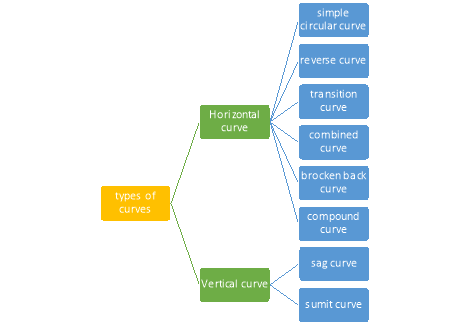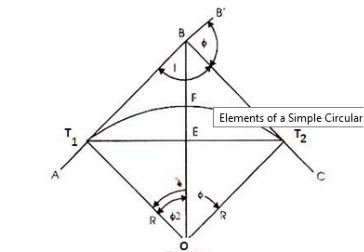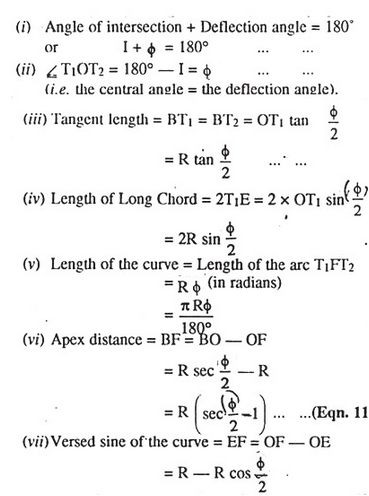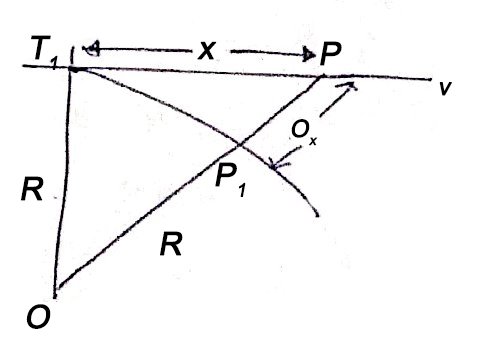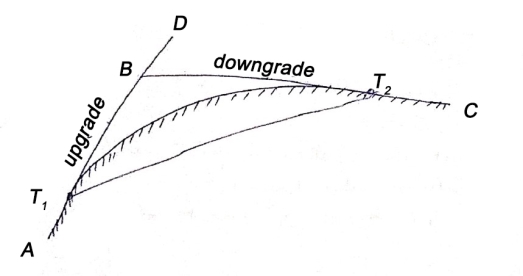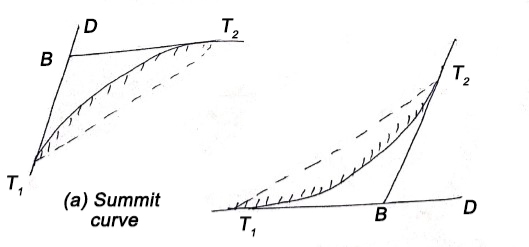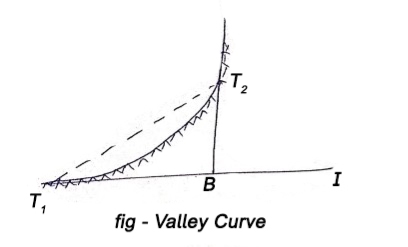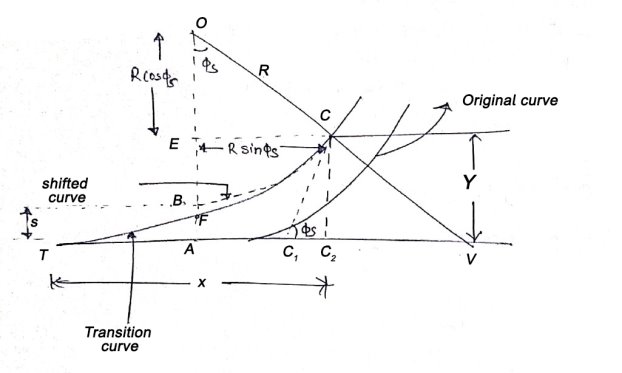|
|
|
∆ = ∆ 1 + ∆ 2
Length of the main tangents IT1 and IT2:
|
A5) Arc definition of degree of curve: According to this, degree of curve in the central angle subtended by an arc of length of 20m or 30 m. If R = radius of curve D = degree of curve as per arc definition for 30m arc length. D° = Q (radians) =
For 20 mm length
|
) Method of setting out curve (a) Linear method (i) Offset from long chord
Where
(ii) Perpendicular offset from tangent
(iii) Radial offset from tangent:
(iv) Successive Bisection of Arc or chord
(v) By offset from chord produced
b) Angular method i) Rankine's method of deflection angle - It is generally used for setting out a circular curve of long length and large radius. - It give good result except then chords are long as compared to radius, so that variation between length of an Arc and its cord becomes considerable. - It is used in highway and Railway
C = chord length (ii) Tachometric method -It is similar to Rankine’s method of deflection angle. - The theodolite at - Less accurate as compared to Rankins. - Chaining is completely dispersed in this method.
(For Incline and line of sight)
(For horizontal line of sight) ii) Two theodolite method - Convenient than any of to our method when ground is undulating rough and not suitable for Linear measurements. - Two theodolite are used and linear measurement are completely eliminated. - Hence, most accurate method. - It is based on principle that angle between the tangent and chord is equal to angle subtended by chord in opposite segment. - Time consuming method - Most accurate method - Highly expensive. |
|
|
|
|
Tangent length
(b) Length of long chord
(c) Total length of curve
(d) Apex distance E
|
Likewise, locate the tangent point T' by measuring along forward tangent the distance Tt from V.
Setting out of transition curve :
Step 2 : Set a theodolite over the point T. Set vernier A to zero, and clamp the upper plate.
Step 3 : Direct the line of sight of theodolite to intersection point V, and clamp lower plate.
Step 4 : Release upper plate. Set the vernier A to first deflection angle (a1).
The line of sight now points towards the first peg on transition curve.
Step 5 : With the zero of the tape pinned at T and an arrow kept at mark corresponding to the first length of the chord, assistant will swing the tape till the arrow is bisected by line of sight.
Fix the first peg at arrow point.
Step 6 : Set the vernier A on the second deflection angle (a2) to direct line of sight to the second peg.
Step 7 : With zero of the tape pinned at T, and keeping an arrow at mark corresponding to the total length of the first and second chords, assistant will swing an arc till the arrow is bisected by the line of sight.
Fix the second peg at arrow point. It should be remembered that the distance is measured from the point T and not from preceeding point.
Step 8 : repeat steps (6) and (7) till the last point C on transition curve is reached.
Setting out of the circular curve :
Step 9 : For setting out circular curve CC', shift the theodolite to junction point C.
Orient theodolite with reference to the common tangent CC1 by directing line of sight towards CT with vernier. A set at a reading equal to , and swinging the telescope clockwise in azimuth by fs(Figure 39.4).
Now line of sight is directed along the common tangent CC1 and the vernier reads zero.
Step 10 : Plunge telescope. The line of sight is now directed along the tangent C1C produced.
deflection angles D1, D2, etc. have been calculated with reference to the tangent C1C produced at C (Figure 38.2).
The line of sight is now correctly oriented, and reading of the vernier A is zero.
Step 11 : Set the vernier A to first deflection angle D1, and locate the first peg on circular curve at a distance of c' from C, where c' is length of the first sub-chord.
Step 12 : Likewise, locate the second peg on circular curve at the distance c equal to the normal chord from first peg with the deflection angle D2 at C.
Step 13 : Continue the above process till junction point C' is reached.
Step 14 : Set out the transition curve T'C' from T' using same procedure as that for transition curve TC.
